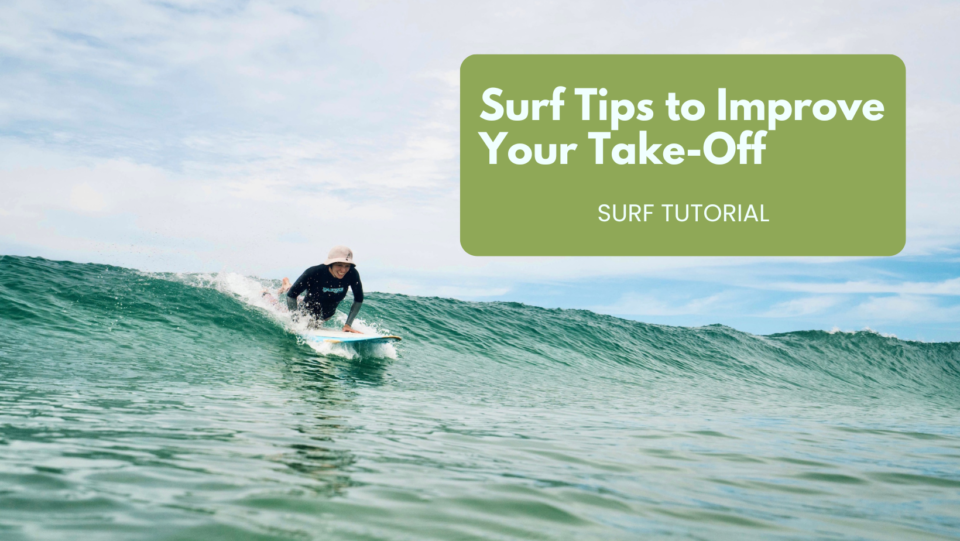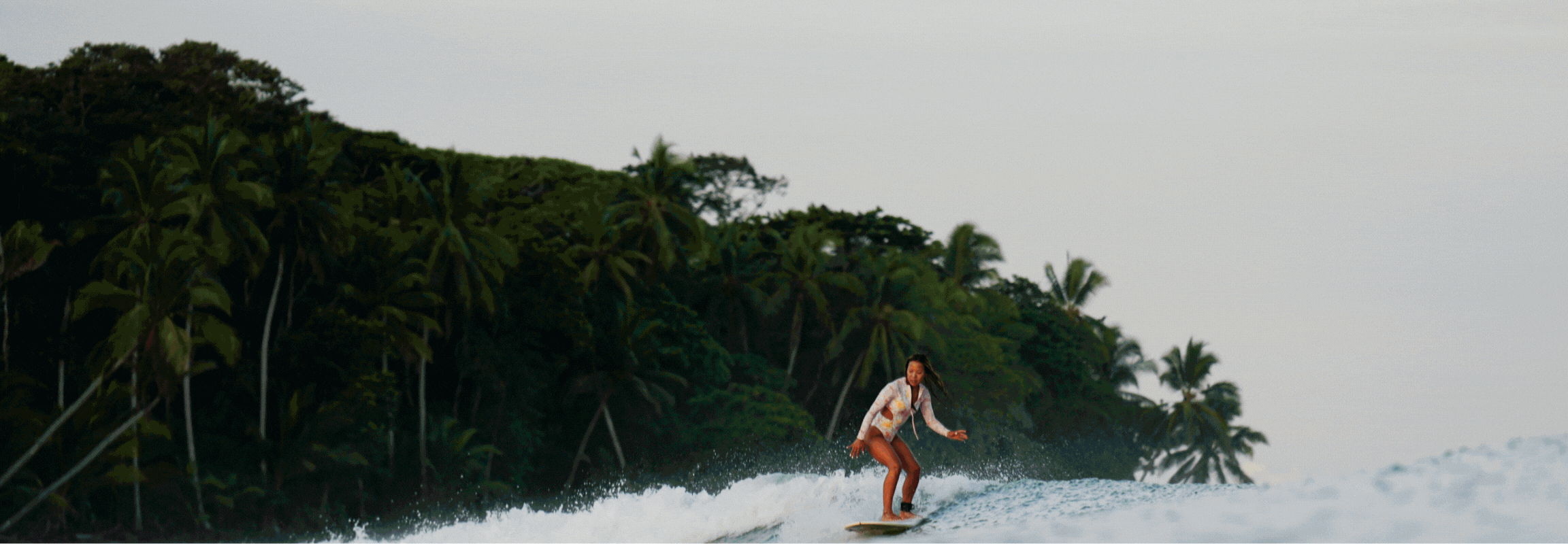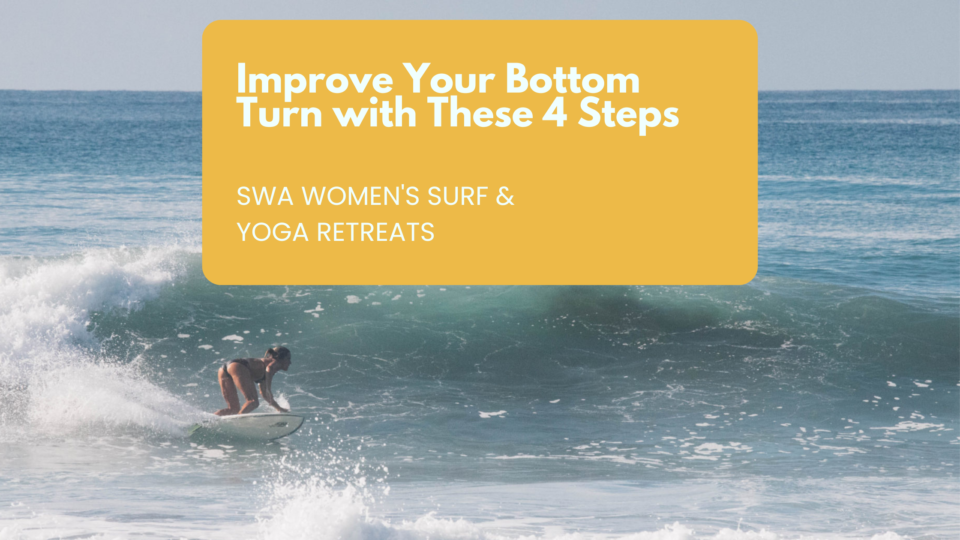The bottom turn. It’s the setup for most maneuvers in surfing. Want to get barreled? Do a cutback? A snap off the top?
We know its not as simple as it sounds, so here we are. We encourage you to play around with these techniques. Consider how your board feels different under your feet each time you try something new, and practice, practice, practice.
-
Keep your back foot on the tail pad
The tail (back end) of the surfboard is the point where the board pivots and turns. If your stance is in the middle of your board and your back foot isn’t placed on the tail pad, you may notice that the board feels stiff and difficult to turn. If you don’t usually get your foot all the way back there, just start here! Practice this. Notice how the board starts to respond differently. Just get used to placing your foot back there, then move on to step 2.
- Position yourself at the bottom of the wave
Mid-wave bottom turns just aren’t as good. Why? If you’re already halfway up the wave, there’s not much space to really set up for a good turn! The best a mid-wave bottom turn will ever produce is an average horizontal cutback. Try to get speed and pump yourself down to the bottom of the wave to set up for the bottom turn. This will ultimately give you more space on the wave to work with and result in a bigger, better maneuver.
-
Touch the wave with your inside hand/fingertips
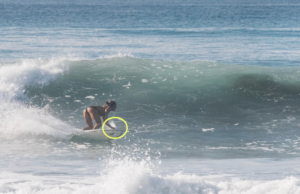
Once you’re positioned at the bottom of the wave, try to reach your inside hand or fingertips down to touch the wave. This will automatically pull your chest down closer to the wave and get you in a lower stance. It also creates a pivot point on the wave. Creating this pivot point will not only give you more control, but will help direct the nose of your board more vertically up the wave. Getting the hang of this is seriously a game-changer! When you try it out you’ll know what I mean. It may be a technique that you’ve never even noticed before, but after reading this I encourage you to go watch a few surf videos (of short boarders) and you’ll notice that talented surfers do it on almost every single wave.
-
Look up (or ahead) at the section on the wave that you want to go to
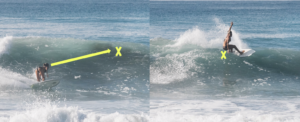
The momentum from your bottom turn needs to take you somewhere! As you reach your inside hand into the water you should already be looking up (or ahead) at the part of the wave you’d like to go to. The purpose of a bottom turn is ultimately to set up for a barrel, snap, or cutback. Keep this in mind and keep your eyes on the prize as you set it all up.
We hope this 4 step guide to improve your bottom turn is helpful and encouraging. If you try out these techniques and they work for you. CLICK HERE to watch our full video breakdown!
